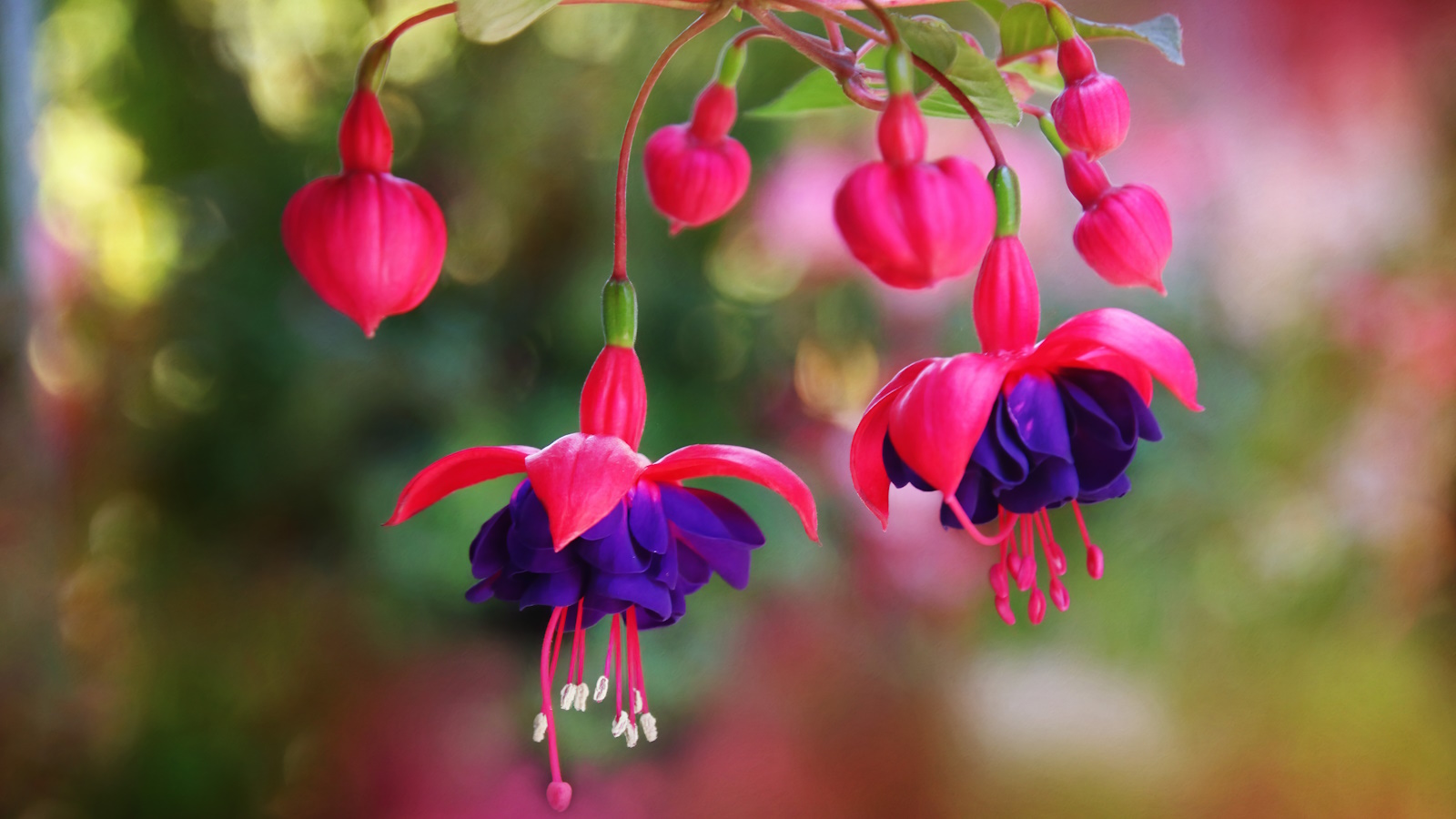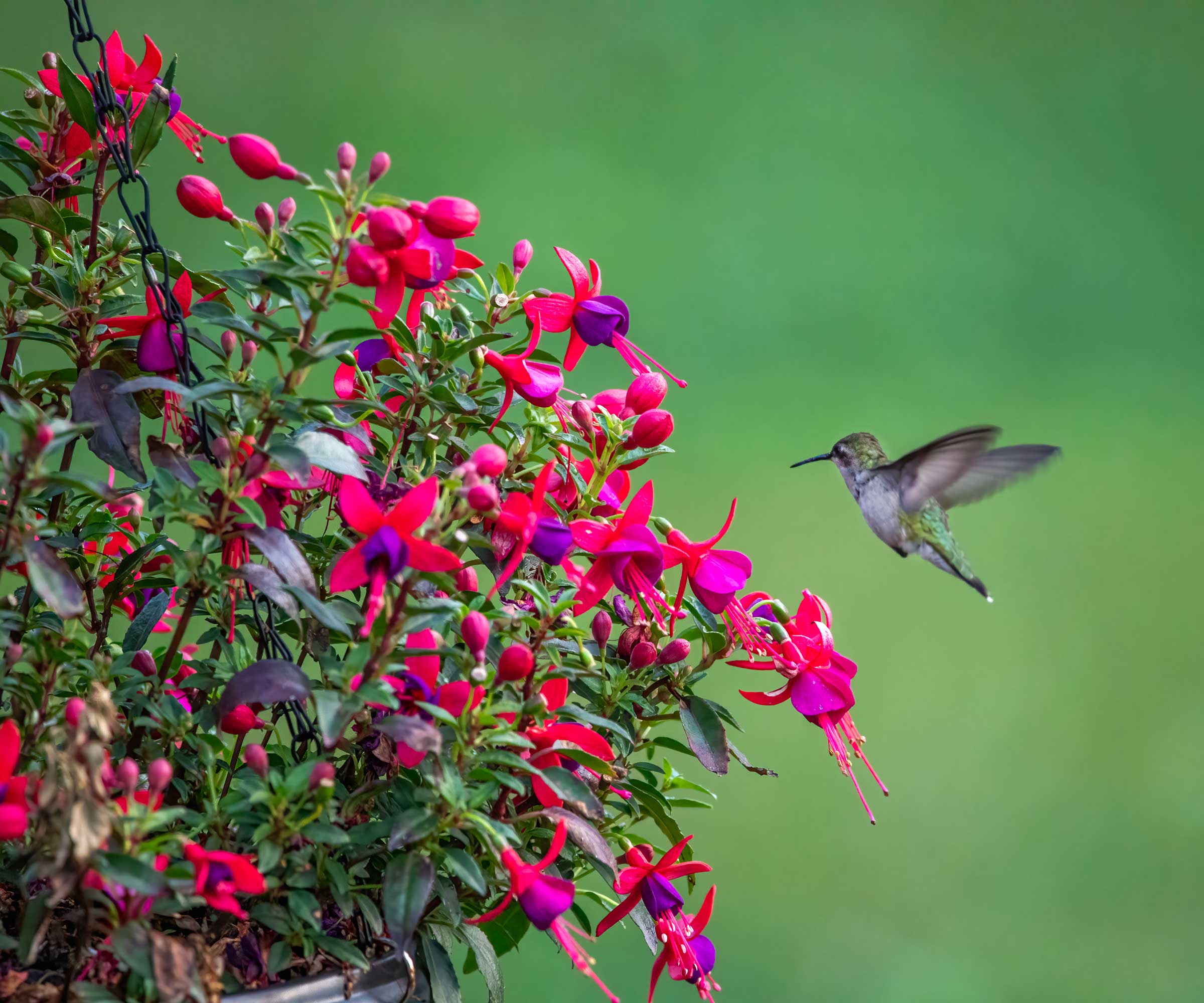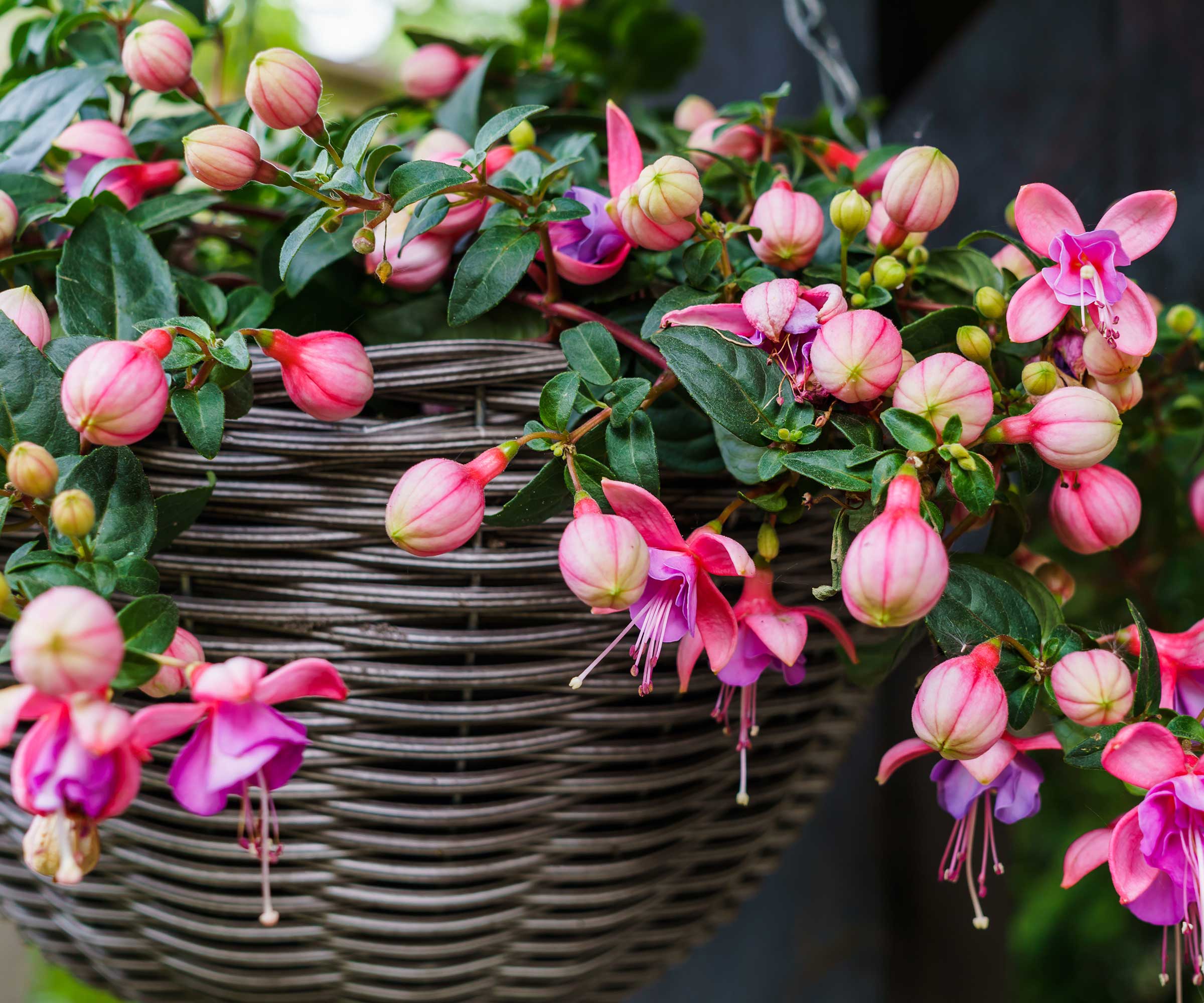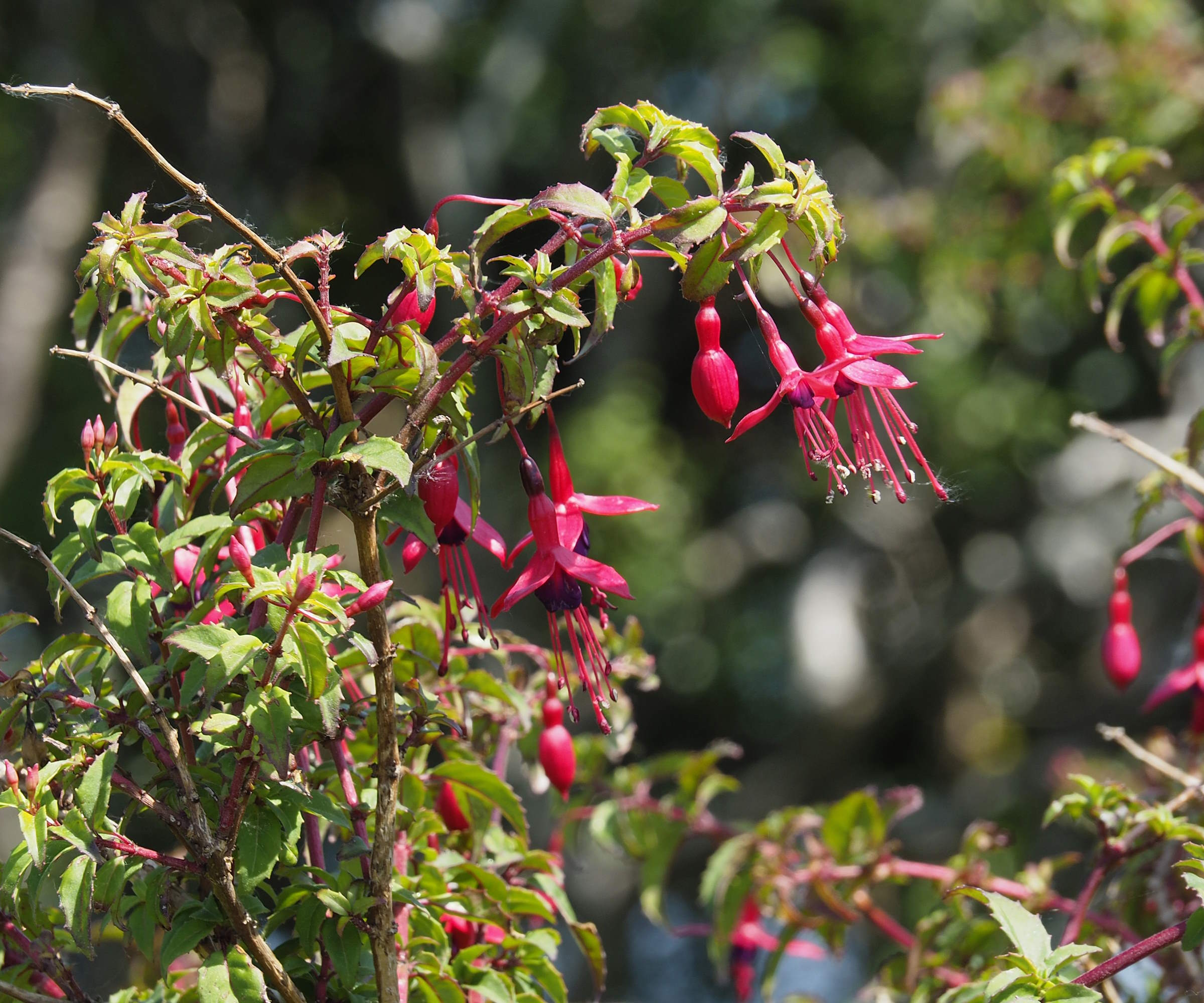How to take fuchsia cuttings – simple tips for successful propagation
Learning how to take fuchsia cuttings is an quick and free way to expand your collection of flowering shrubs


Fuchsias are classic cottage garden plants that have remained popular for centuries. Love them or hate them, these colorful, blooms can always be relied upon to put on a show in the garden. With bold, bell-shaped flowers in pink, purple, red and white, fuchsias are sure to add color and impact wherever they are planted.
There are over 110 recognized species that are part of the Fuchsia plant genus. The majority of these are native to South and Central America, thriving in tropical and subtropical climates where there is no shortage of sunshine. One of my favorite varieties is the hardy Fuchsia magellanica, with long, trumpet-like blooms that hang down. This species is cold-hardy, floriferous and popular with pollinators - what more could you ask for?
Fortunately for us gardeners, fuchsias are some of the easiest plants to take cuttings from. Much like learning how to care for fuchsias, learning how to take fuchsia cuttings is straightforward, and by following a few simple steps, you can guarantee propagation success. Here, two gardening experts share all the information you need.

How to take fuchsia cuttings
Learning how to take plant cuttings might seem intimidating at first, but once you understand a few simple rules, it can be a fun and free way to grow your perennial collection. Along with salvia and verbena, fuchsias are some of the easiest plants to propagate, and will quickly grow and flower the following year.
When to take fuchsia cuttings

Fuchsia cuttings are best taken towards the end of summer when evening temperatures remain mild. While this will depend on where you live and your US hardiness zone, generally speaking, fuchsias are plants to propagate in August, September and even October in warm, southern regions.
'Fuchsias have beautiful, pendulous blooms that are hard to resist,' says plant expert, Katie Sunderlage. 'I like planting fuchsias in a hanging basket to make a colorful statement, where they will bloom all summer and even into fall in most climates.'
Katie recommends the 'Wicket Queen' variety for its 'double blooms with red petals and deep blue corolla,' as well as the 'Tom Thumb' variety for its 'upright nature but compact size, making it ideal for containers.' Many fuchsia varieties are available to buy from Amazon.
Design expertise in your inbox – from inspiring decorating ideas and beautiful celebrity homes to practical gardening advice and shopping round-ups.
Whatever fuchsia species you grow, most can be propagated from cuttings with a high degree of success when taken in late summer. It is important, however, to protect cuttings during their first winter, 'as most fuchsia species are not tolerant of cold climates,' Katie says. 'Non-hardy, small plants and cuttings must be brought indoors or protected.'

Operations Manager at Holland Group, managing the customer service department and purchasing. Katie has been in the green industry since 2005 in the Greater Milwaukee area, earning her degree in Horticulture in 2008. She has been able to share her love for plants working in multiple garden centers, in sales positions and most recently in an online retail platform at Holland Group.
How to take fuchsia cuttings

- Using clean, sharp tools, like these Felco pruning snips from Amazon, select healthy green stems with plenty of foliage. 'Make your cut just above a leaf node,' says Rachel Bull, head of gardens at Homes & Gardens. 'Each cutting should be approximately 6 inches in length.
- 'Remove most of the foliage from each cutting, leaving only 2 small fuchsia leaves at the top of each stem,' Rachel adds. 'While you work, it is a good idea to place each cutting inside a clear, plastic bag, to help keep them hydrated.'
- Rooting hormone powder, available from Amazon, is optional but can help speed the rooting process up. If you choose to use it, only dip the bottom inch of each cutting in water followed by rooting hormone powder.
- Place your cuttings in a small pot, no bigger than 4 inches in diameter. Use good-quality seed and cutting soil, available from Amazon, combined with a few handfuls of grit to improve drainage. 'Place the cuttings around the edge of the pot, ensuring that the leaves are not touching,' Rachel adds.
- Water your cuttings, before placing a small, clear plastic bag over the pot to create a humid environment where they should easily root.
- 'Place your cuttings in a sheltered, warm spot, preferably in a greenhouse, but ensure that the soil does not dry out,' Rachel says. After 4 weeks, roots should be visible. 'You can then repot each cutting into a small container.'

Rachel is a gardening editor, flower grower and floral designer. Her journalism career began on Country Living magazine, sparking a love of container gardening and wild planting. After more than a decade writing for and editing a range of consumer, business and special interest titles, Rachel became editor of floral art magazine The Flower Arranger. She then trained and worked as a floral designer and stylist in London for six years, before joining the Homes & Gardens team.
FAQs
Do fuchsia cuttings produce the same blooms as the parent plant?
Yes, cuttings will always produce the same color and shape of flowers as the parent plant, as they carry the same genetic information. Growing fuchsia plants from collected seed will often produce unexpected results, due to cross-pollination.
Learning how to take fuchsia cuttings is a free and fun way to make more plants for your yard. Whether you have a small space or a large plot, taking cuttings this year will pay off in the years to come when you have plenty of new plants to fill any gaps.
For more information, see our guide on when to prune hardy fuchsia, to keep your prized shrubs in tip top shape this year.

Thomas is a Content Editor within the Gardens Team at Homes and Gardens. He has worked as a professional gardener for both public spaces and private estates, specializing in productive gardening, growing food and flowers. Trained in Horticulture at the Garden Museum, he has written on gardening and garden history for various publications, including The English Garden, Gardens Illustrated, Hortus, The London Gardener and Bloom. He has co-authored a Lonely Planet travel book, The Tree Atlas, due out in 2024.
